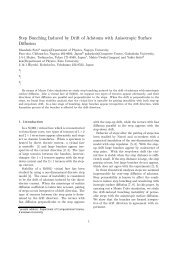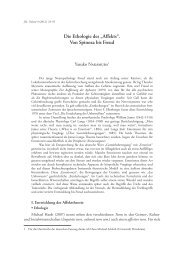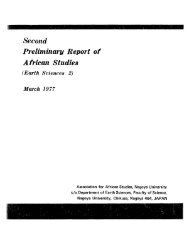k9254.pdf
k9254.pdf
k9254.pdf
Create successful ePaper yourself
Turn your PDF publications into a flip-book with our unique Google optimized e-Paper software.
1.1. Introduction.<br />
Henri Braconnot's work in the 1830s is perhaps the first modern example of polymer science.<br />
Braconnot, along with Christian Schönbein and others, developed derivatives of the natural<br />
polymer cellulose producing new, semi-synthetic materials, such as celluloid and cellulose<br />
acetate. The term "polymer" was coined in 1833 by Jöns Jakob Berzelius, though Berzelius did<br />
little that would be considered polymer science in the modern sense. In the 1840s, Friedrich<br />
Ludersdorf and Nathaniel Hayward independently discovered that adding sulfur to raw natural<br />
rubber (polyisoprene) helped prevent the material from becoming sticky. In 1844 Charles<br />
Goodyear received a U.S. patent for vulcanizing rubber with sulfur and heat. Thomas Hancock<br />
had received a patent for the same process in the UK the year before. Vulcanized rubber<br />
represents the first commercially successful product of polymer research. In 1884 Hilaire de<br />
Chardonnet started the first artificial fiber plant based on regenerated cellulose, or viscose rayon,<br />
as a substitute for silk, but it was very flammable. [1] In 1907 Leo Baekeland invented the first<br />
synthetic polymer, a thermosetting phenol-formaldehyde resin called Bakelite.<br />
Despite significant advances in polymer synthesis, the molecular nature of the polymer was not<br />
understood until the work of Hermann Staudinger in 1922. Prior to Staudinger's work, polymers<br />
were understood in terms of the association theory or aggregate theory which originated with<br />
Thomas Graham in 1861. Graham proposed that cellulose and other polymers were "colloids",<br />
aggregates of molecules small molecular mass connected by an unknown intermolecular force.<br />
Hermann Staudinger was the first to propose that polymers consisted of long chains of atoms<br />
held together by covalent bonds. It took over a decade for Staudinger's work to gain wide<br />
acceptance in the scientific community, work for which he was awarded the Nobel Prize in 1953.<br />
The World War II era marked the emergence of a strong commercial polymer industry. The<br />
limited or restricted supply of natural materials such as silk and latex necessitated the increased<br />
production of synthetic substitutes, such as rayon and neoprene. In the intervening years, the<br />
development of advanced polymers such as Kevlar and Teflon have continued to fuel a strong<br />
and growing polymer industry.<br />
10









